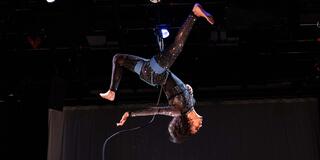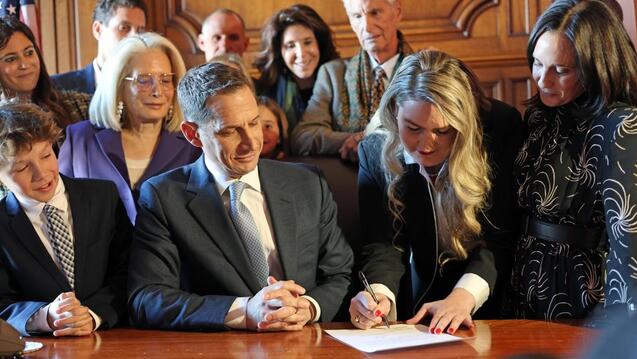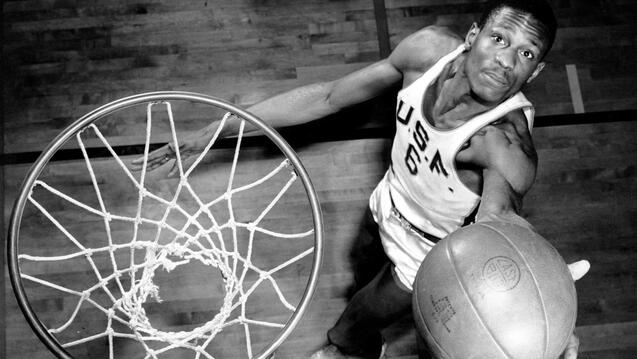Alumna Finds Liberation Through Movement and Art at USF

Saharla Vetsch '21 discovered both drag and aerial dance at USF, gaining the skills to flourish as an artist. These art forms have shaped her approach to performance, storytelling, and activism. During Women’s History Month, USF recognizes artists like Saharla, whose work challenges conventions, inspires change, and fosters community through movement.
How have your experiences in drag nightlife and aerial dance shaped your artistic journey, and how did USF play a role?
My first exposure to aerial came through an internship with Flyaway Productions, which I got through the USF dance department. Jo Kreiter, who runs Flyaway, mentored, trained, and connected me with other companies.
Drag and aerial dance have shaped me in different but equally important ways. Drag has taught me adaptability, improvisation, and the power of community. It’s a do-it-yourself art form that demands resourcefulness. Aerial, on the other hand, requires discipline and an intense awareness of my body. Performing requires careful preparation—what I eat, how I train, and an unwavering focus on safety. I fell in love with aerial because it felt like learning to dance all over again.
What does staying engaged with the USF community mean to you?
USF was the catalyst for my success. The Performing Arts & Social Justice Dance Department has supported me even after graduation, providing tools and resources to keep my work going.
I’ve worked with so many inspiring alumni and students who are truly dedicated to learning the craft, its relevance today, and how art can serve as a political platform. That kind of education is rare, and I feel honored to have had it."
Looking back, I see how much I loved my time at USF and how deeply it shaped me. I probably wouldn’t have moved to San Francisco or pursued art without the support it provided.
How has your background influenced your approach to performance and storytelling?
My approach comes from my intersecting identities as a Somali-American queer woman navigating mental illness.
I want to foster joy and share the presence, liberation, and power of movement.
I try to be a possibility model for what it looks like to let movement empower you and share that with others.
How do you stay inspired in your work?
The San Francisco drag community is rooted in self-expression and activism—creating spaces for queer people and fighting for our right to exist. Aerial dance blends circus, modern dance, and aerial work, and though not new, is a niche that the Bay Area has helped popularize.
What would you say has been your most challenging moments in your career and what advice would you give to students seeking to find their unique voice?
My biggest challenge has been imposter syndrome. I know it exists in all fields, but in art, you’re especially vulnerable. What helps is reminding myself—and talking with colleagues—that not everything I create has to be perfect or polished.
You have to start somewhere. If you sit and make nothing, that will set you back more than trying and failing."
Support the next generation of artists and creators at this year's Day of the Dons on March 27.


